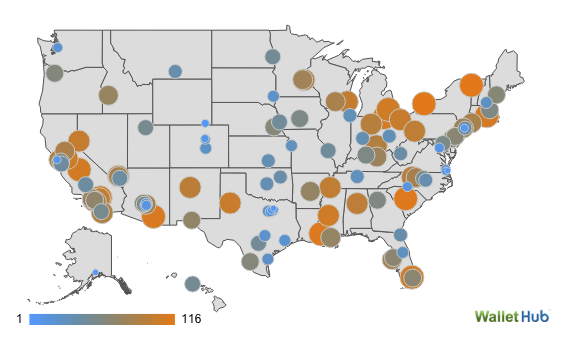New report from WalletHub, in turn summarized on Forbes. WalletHub tends to do some interesting stuff with their data, even if it’s pretty easy to quibble with some of the findings. The methodology here involved:
- Average workweek hours
- Commute time
- Labor force participation rate
- Workers with multiple jobs
- Volunteer hours per resident
- Lack of sleep
- Leisure time spent on an average day
All that was weighted; average workweek hours was the highest value weight.
Knowing that, you’d assume NYC or San Francisco or DC or Boston is probably No. 1, right? Nope.
Here’s the top 20 for more context:
Absolutely nothing you’d expect until about No. 3 (Plano is essentially Dallas), then 6 (Jersey City is an off-shoot of NYC), then 8 (the Bay Area). New York City proper isn’t even on this list until No. 40, between Jacksonville and Charleston, WV. Odd.
Here’s the number one observation I had when looking at this: Anchorage comes in first, which I suppose makes sense for a bunch of reasons, but … the average workweek hours is 40.7? And that’s essentially No. 1? That’s barely above a 40-hour workweek. Then you get down to San Francisco and it’s 39.6, even though Jonathan Ive is claiming his designers at Apple work 12-hour days through the week?
Those numbers (for workweek hours) seem low, and they definitely contradict the idea of “The Culture of Busy.” I’m pretty sure most Americans in white-collar or office jobs would claim, on base, that they work 50-60 hours a week. (People also love to put themselves on the Cross, you know?)
Interesting thing from the top of the study is this: from 1950 to 2010, Americans actually work 216 hours less per year. I’m sure most people in “The Busy Trap” think it feels like more, but less makes sense: technology, for one thing, has made it easier to do the same tasks that were harder to do immediately post-WW2.
Also interesting: when you take away e-mails and meetings, you really only do about 590 hours of actual work in a given year. People often forget this.
Bottom line: this chart is interesting but probably not broadly representative of the American working ethos (although I could be wrong on that).

